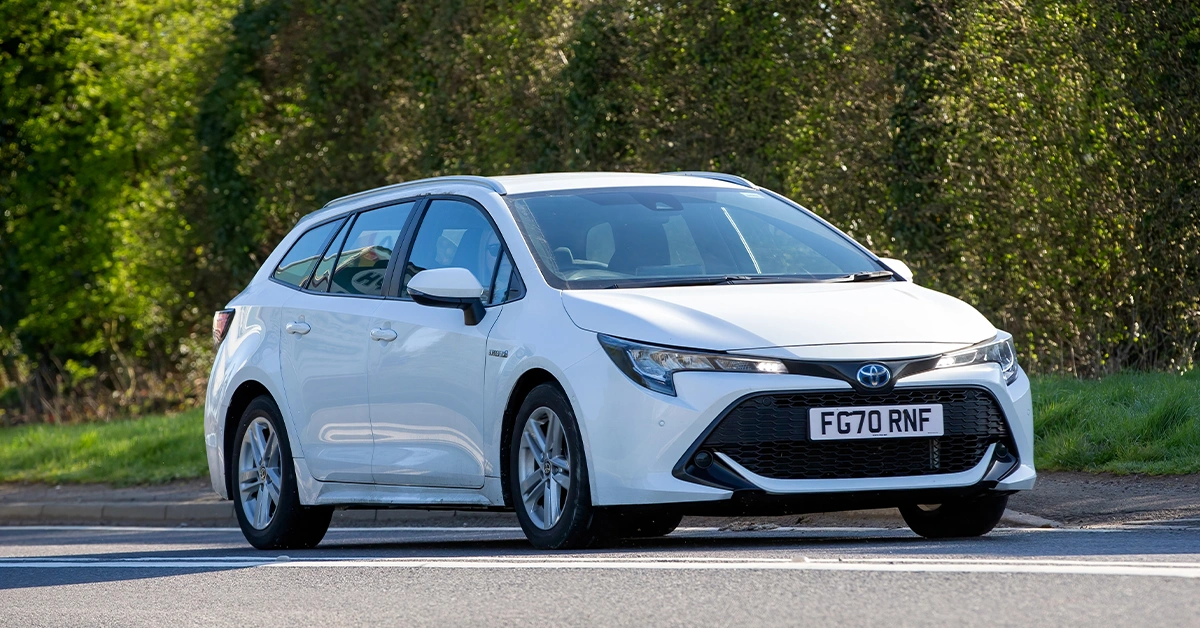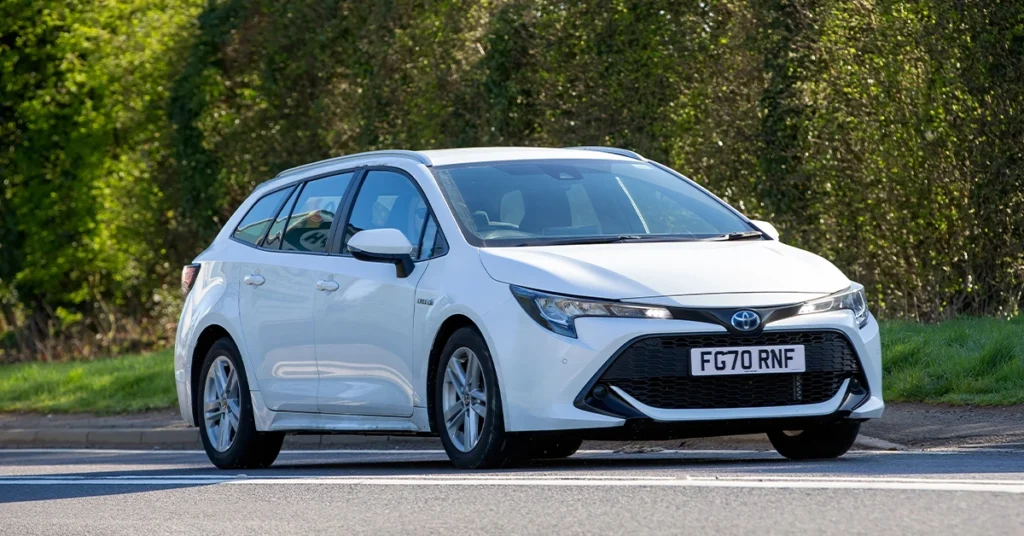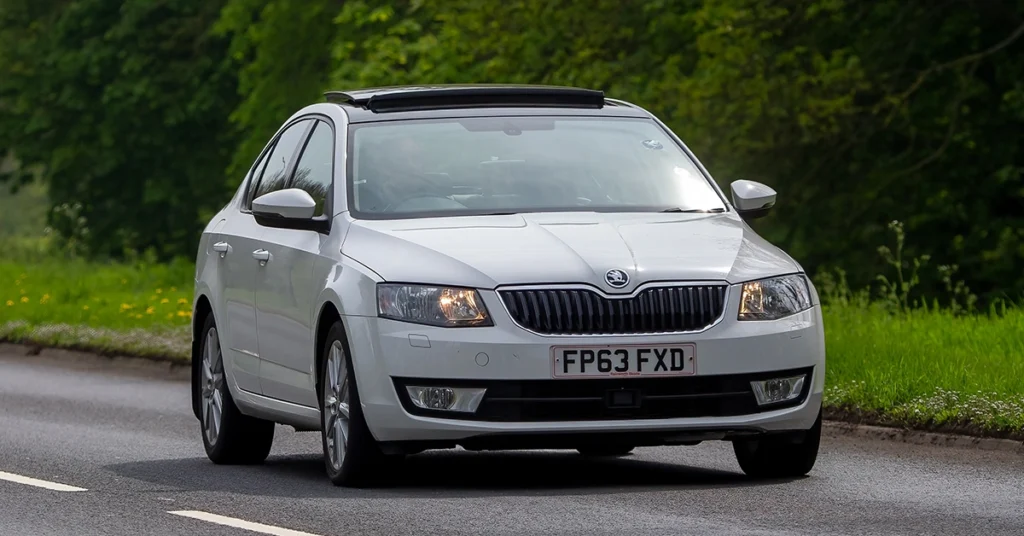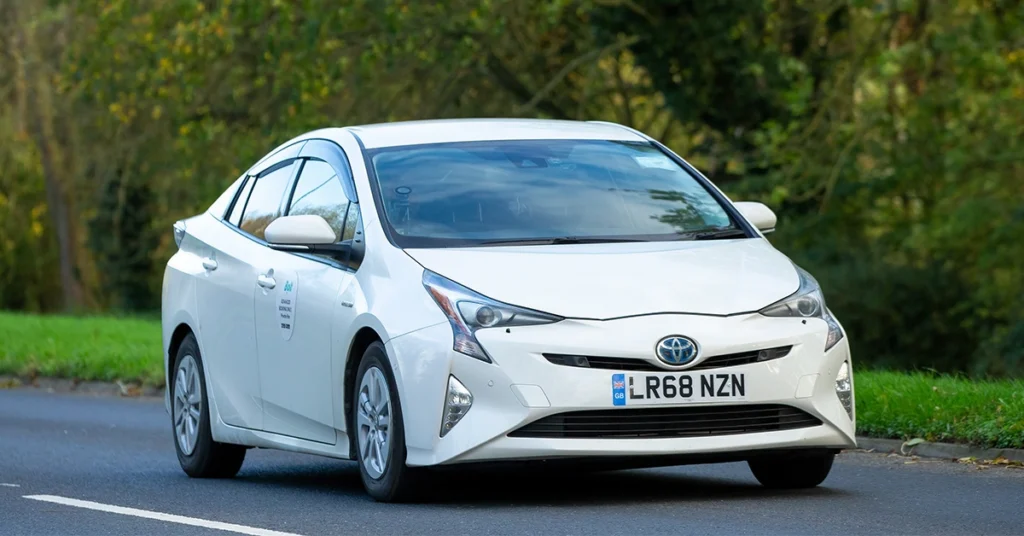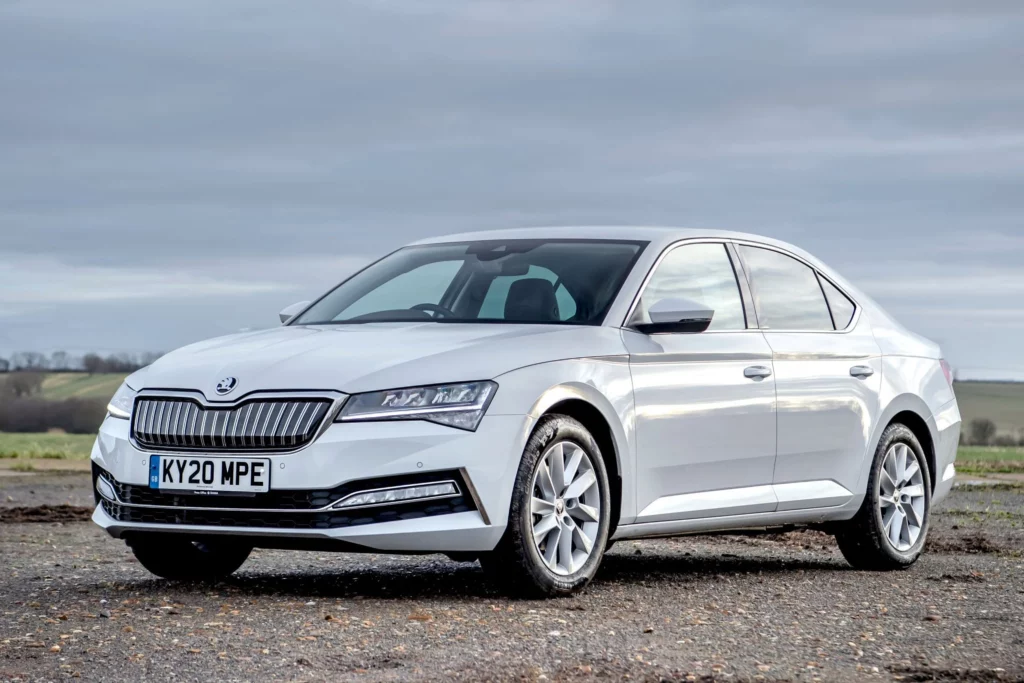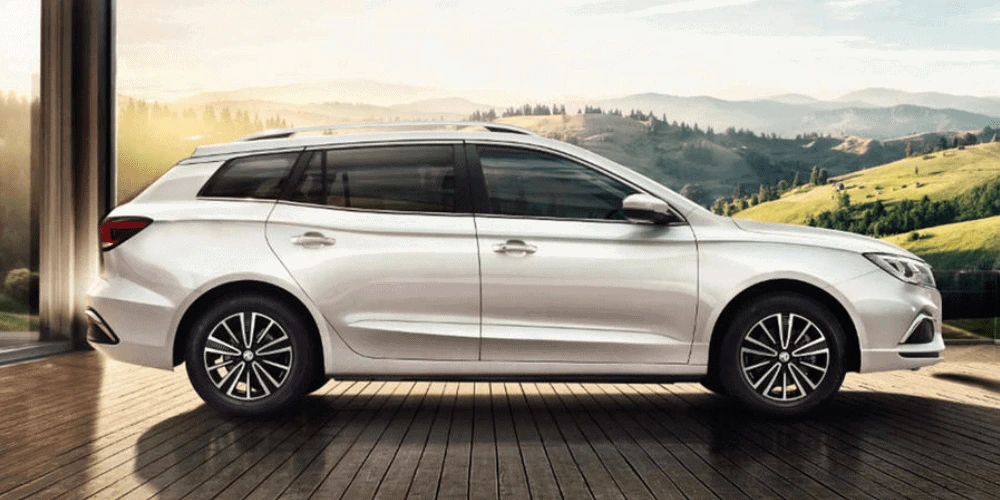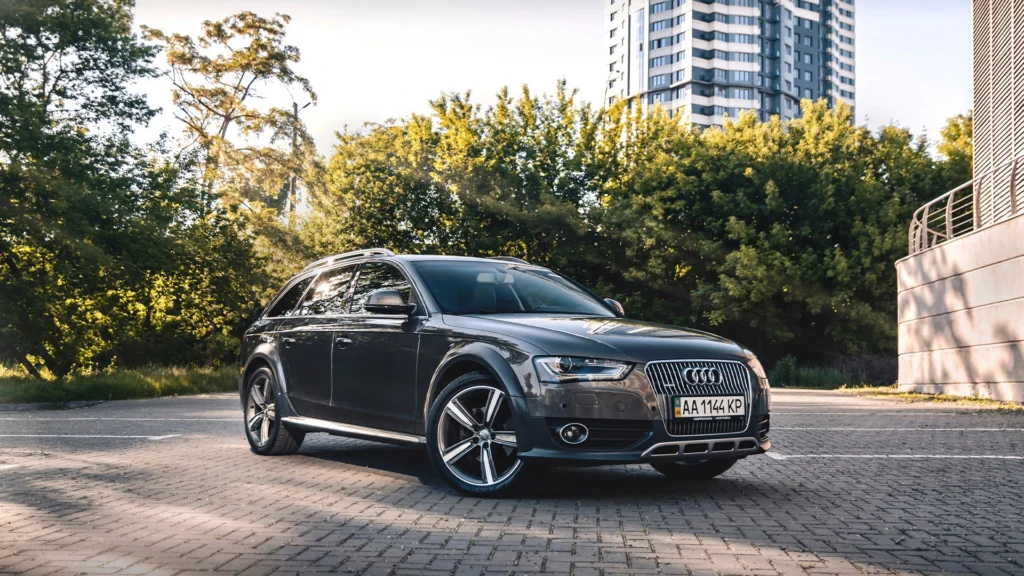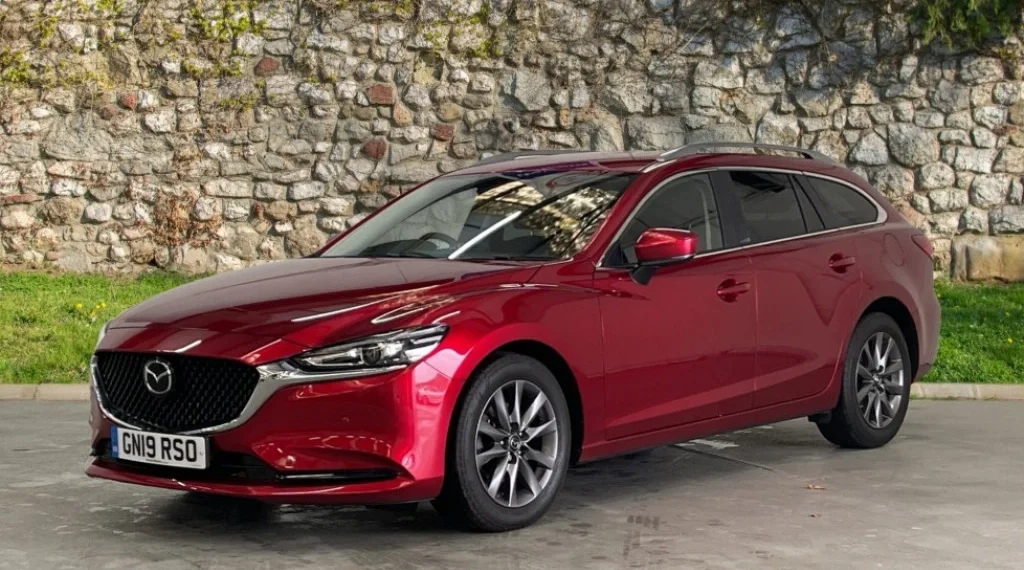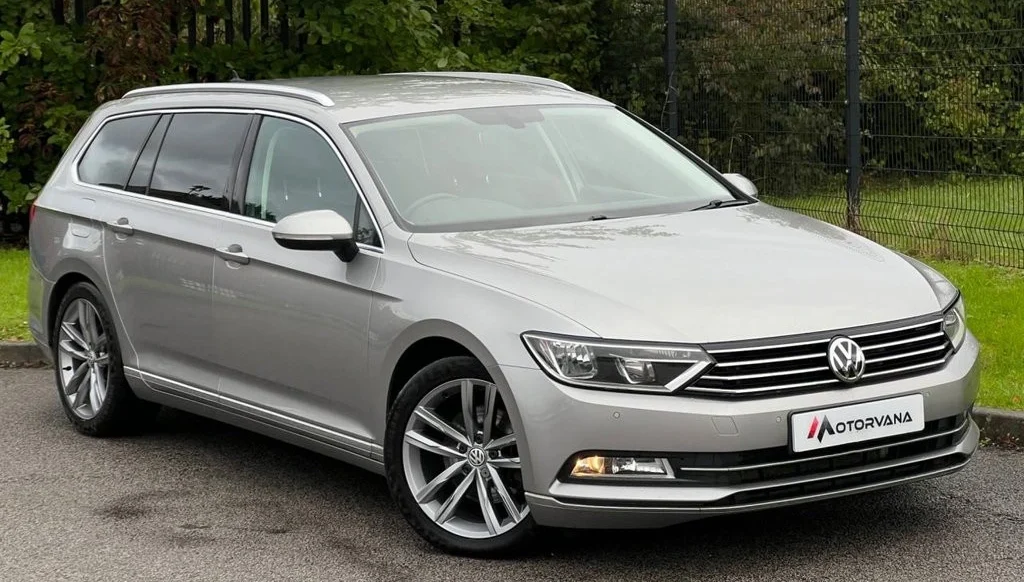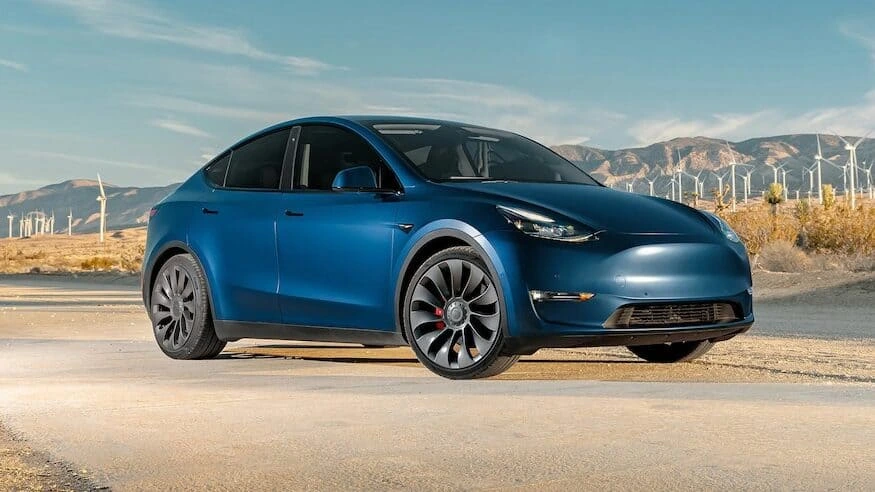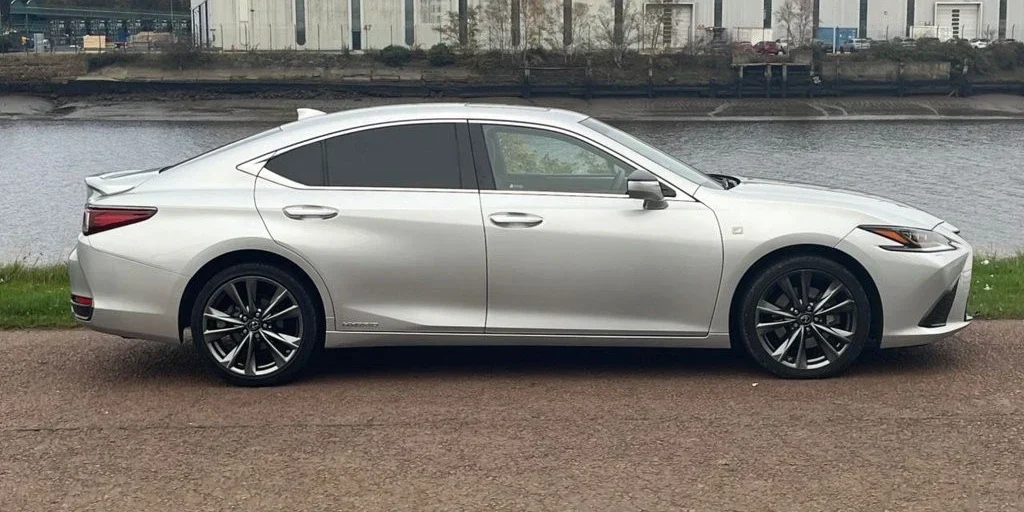Choosing the right vehicle for taxi work presents a unique challenge for drivers across the UK. Whether you’re operating with Uber or traditional private hire your car is more than just transportation—it’s your livelihood and mobile office.
According to research by Zego in 2023, the average taxi driver in Britain covers an impressive 46,500 miles annually while picking up approximately 5,750 passengers.
With this level of intensive use, finding a vehicle that balances reliability, fuel efficiency, and passenger comfort becomes essential to maintaining profitability and customer satisfaction.
Our comprehensive guide addresses these challenges by presenting a diverse selection of vehicles, typically 3-4 years old, providing the sweet spot between modern features and affordability that most taxi operators seek.
Our experts went to the drawing board and visited numerous dealerships to choose a mix of vehicles—electric, hybrid, and efficient diesel—that satisfy the real-world needs of taxi drivers. Whether you’re from a small town and need a private hire vehicle that can handle long motorway miles, or you’re navigating the congested streets of London and require something exceptionally efficient with low emissions, we’ve tried to cover it all.
Note: Each recommendation includes the exact trim level and specific variant, so you know precisely what to look for when making your purchase—no guesswork required.
Toyota Corolla Estate Hybrid (2019-2025)
Efficiency Champion with Taxi-Perfect Reliability
The Toyota Corolla Estate Hybrid has rapidly established itself as the new benchmark for taxi drivers, steadily replacing the Prius as the hybrid of choice across the UK.
We asked our customers and one of them replied,
“I’d say 50% of the Ubers I’ve taken in the past few months have been Corolla estates.”
This shift is particularly evident in urban centres, where the combination of self-charging hybrid efficiency, spacious boot, and Toyota’s legendary reliability makes it exceptionally well-suited for intensive taxi operations covering the average 46,500 annual miles.
With documented cases of Toyota hybrids exceeding 200,000 miles on original components, it delivers the durability that taxi operators depend on.
USPs for Taxi Drivers
- Exceptional reliability: Ranked 6th in the 2024 What Car? Reliability Survey with potential for 10-year/100,000-mile Toyota warranty
- Outstanding fuel economy: Real-world urban efficiency of 55-60mpg saving operators £1,500+ annually versus conventional alternatives
- Practical space: 596-litre boot capacity easily handles multiple suitcases for airport runs
- Lower maintenance costs: Regenerative braking extends component life, while hybrid system reduces engine wear.
Considerations:
- CVT transmission can cause engine drone when accelerating hard on motorways.
- Higher wind/road noise than some premium rivals during high-speed cruising.
- Slightly higher initial purchase price than conventional petrol/diesel alternatives.
- Infotainment system lacks the intuitiveness of some competitors.
- Digital instrument display requires more button presses than ideal while driving.
Skoda Octavia 2.0 TDI (2020-2025)
Space Champion with Impressive Economy
The Skoda Octavia has built a reputation as the taxi driver’s favourite across much of Europe, and for good reason. This fourth-generation model continues the tradition, offering class-leading space that belies its modest exterior dimensions.
Our research with taxi drivers reveals that the 2.0 TDI version is particularly valued for its blend of economy and torque, making it perfect for fully-loaded airport runs.
The Octavia’s appeal lies in its remarkable ability to combine the external dimensions of a family car with interior space that rivals vehicles from the class above.
USPs for Taxi Drivers
- Class-leading boot capacity: Enormous 600-litre boot (640 litres in Estate version) easily outclasses rivals
- Impressive diesel economy: 2.0 TDI 150 delivers real-world 55-60mpg even when fully loaded
- Exceptional rear passenger space: Limousine-like legroom impresses fare-paying customers
- Robust build quality: Interior designed to withstand intensive commercial use
Considerations:
- Some reliability concerns with electrical systems reported by intensive users.
- Infotainment touchscreen can be fiddly to use while driving.
- Soft suspension can feel somewhat floaty over crests at higher speeds.
- Timing belt requires replacement every five years (£449 at Skoda dealers).
- Significant boot lip can make loading heavy luggage more challenging.
Toyota Prius Hybrid (2016-2022)
The Iconic Taxi Standard
The Toyota Prius has become nearly synonymous with taxi operations over the past decade, establishing itself as the gold standard for urban taxi vehicles.
Its distinctive silhouette is instantly recognisable as a taxi in cities worldwide, with many drivers reporting it as their first choice for urban operations.
The Prius’s reputation for exceptional reliability combined with remarkable urban fuel economy makes it particularly well-suited to the stop-start conditions of city taxi work, where our research indicates drivers can complete over 50,000 miles annually with minimal mechanical issues.
USPs for Taxi Drivers
- Unmatched reliability: Multiple documented cases of taxi Priuses exceeding 300,000 miles on original components
- Class-leading urban economy: Real-world efficiency of 60-65 mpg in city environments where taxis primarily operate
- Reduced maintenance costs: Regenerative braking significantly extends component life
- Proven technology: Toyota’s hybrid system refined across multiple generations since 1997
Considerations:
- CVT transmission causes engine drone during hard acceleration on motorways.
- Boot space more limited than estate options (502 litres).
- Motorway economy (50-55mpg) less impressive than urban efficiency.
- Unconventional dashboard layout takes time to acclimate to.
- Limited rear headroom due to aerodynamic roofline.
Skoda Superb (2015-2024)
Executive Space at Mainstream Price
The Skoda Superb lives up to its name by offering executive-level space and comfort at a mainstream price point, making it increasingly popular for premium taxi services.
Our taxi operator surveys show the Superb is particularly valued in regions where longer-distance airport transfers form a significant part of business.
The combination of genuinely limousine-like rear legroom, enormous boot capacity, and respectable fuel economy makes the Superb an exceptional proposition for operators targeting the executive transport segment without the maintenance costs of traditional premium brands.
USPs for Taxi Drivers
- Exceptional passenger space: Rear legroom exceeds many luxury vehicles costing twice as much
- Massive luggage capacity: 625-litre hatchback expandable to 1,760 litres with seats folded
- Value proposition: Premium feel at mainstream pricing and running costs
- Refined motorway experience: Excellent sound insulation creates premium passenger experience
Key Features for Taxi Drivers:
- Reliability: Sharing components with the Volkswagen Passat ensures good long-term durability.
- Efficiency: 2.0 TDI 150 engine delivers 50-55mpg in mixed driving conditions.
- Space: Premium-level rear accommodation with class-leading boot capacity.
- Comfort: Well-damped suspension prioritises passenger comfort on longer journeys.
- Image: Projects executive status without premium badge maintenance costs.
Considerations:
- Higher initial purchase cost than mainstream alternatives.
- Some reliability concerns with electrical systems in intensive use.
- Diesel engines can be occasionally gruff when cold.
- Handling prioritises comfort over driver engagement.
- Lower models lack some desirable features (SE Technology recommended).
MG5 Estate Electric (2020-2025)
First Electric Estate for Taxi Operators
The MG5 Estate represents the first affordable electric estate car on the market and offers taxi operators a practical path into zero-emission operation without the premium pricing of most EV alternatives.
Our taxi operator feedback indicates dramatic running cost savings, with some reporting operational costs as low as 2-3 pence per mile in urban environments compared to 15-20 pence for conventional vehicles.
As the first mainstream electric estate, the MG5 fills a specific niche for taxi drivers looking to future-proof their business while maintaining the practical space requirements essential for airport runs and luggage transportation.
USPs for Taxi Drivers
- First electric estate: Unique combination of zero emissions and practical cargo space
- Dramatic running cost savings: Operating costs 70-80% lower than conventional taxis
- Impressive range: Official 250-mile WLTP range adequate for most daily taxi routes
- Congestion charge exemptions: Potential £4,000 annual savings for operators in emission-regulated zones
Considerations:
- 87kW maximum charging speed slower than premium EV alternatives.
- Practical range closer to 180-200 miles in real-world intensive taxi use.
- Infotainment system can be fiddly to operate while driving.
- Less engaging to drive than some conventional alternatives.
- Climate controls integrated into touchscreen impede quick adjustments.
Audi A4 45 TDI (2015-2024)
Premium Comfort with Executive Appeal
The Audi A4 represents a strategic choice for taxi operators targeting the premium transport segment.
While requiring higher initial investment than mainstream alternatives, it enables access to executive clients and higher fare structures, potentially delivering superior long-term returns.
The A4’s combination of refined ride quality, upmarket interior finishes, and impressive fuel economy in the diesel variants makes it particularly well-suited for airport transfers and business clients who expect a more prestigious vehicle.
Executives consistently comment on the exceptional cabin quality and sophisticated ambiance that elevates the taxi experience beyond what mainstream vehicles can provide.
USPs for Taxi Drivers
- Premium brand appeal: Attracts executive clients willing to pay premium rates
- Exceptional build quality: Interior fit and finish surpasses mainstream alternatives
- Refined motorway manners: Class-leading noise suppression enhances passenger experience
- Impressive diesel efficiency: 2.0 TDI engines deliver up to 50mpg in real-world use
Considerations:
- Higher purchase and maintenance costs than mainstream alternatives.
- Audi S-Line models have firmer suspension that can compromise passenger comfort.
- Electronic systems can develop issues with intensive taxi use.
- S Tronic gearbox requires fluid changes at 38,000 miles to avoid expensive repairs.
- Boot space smaller than some mainstream rivals at 480 litres.
Mazda 6 2.2 Skyactiv-D (2012-2022)
Stylish Alternative with Driver Appeal
The Mazda 6 Tourer offers taxi drivers a compelling alternative to the ubiquitous Skoda and Volkswagen estate options. While the Skoda Superb Estate might offer more absolute space, the Mazda delivers a more engaging driving experience combined with exceptional reliability and strong residual values.
The Skyactiv-D diesel engines have earned particular praise for blending refinement with impressive real-world economy, typically achieving 55-60mpg in mixed driving conditions – noticeably better than the equivalent Ford Mondeo Estate.
For taxi drivers seeking to differentiate their service through vehicle choice while maintaining the practicality and efficiency necessary for profitable operation, the 6 Tourer presents a distinctive option.
USPs for Taxi Drivers
- Superior reliability: Consistently high ratings in dependability surveys compared to Ford and VW rivals
- Excellent diesel efficiency: 2.2 Skyactiv-D delivers better real-world economy than equivalent German alternatives
- More engaging drive: Sharper handling than Passat or Superb estates while maintaining passenger comfort
- Intuitive controls: Physical buttons and rotary controller easier to use while driving than VW’s touchscreen systems
Considerations:
- Boot space smaller than Skoda Superb Estate (522 vs 660 litres).
- Firmer low-speed ride than Volkswagen Passat, especially with larger wheel options.
- Slightly narrower dealer network than mainstream rivals like Ford.
- Higher-spec Sport models sacrifice some ride comfort for style with 19-inch wheels.
- Not as widely recognised as a taxi vehicle compared to Skoda models.
Volkswagen Passat Estate (2015-2024)
Versatile Workhorse with Premium Appeal
The Volkswagen Passat Estate has established itself as a staple of private hire fleets across Europe, striking an effective balance between the practicality of mainstream options and the refinement of premium alternatives.
Its blend of quality, space and reliability makes it particularly versatile across different taxi operations.
With a cavernous 650-litre boot capacity—40% larger than a standard saloon—the Passat Estate easily accommodates the multiple suitcases required for airport transfers, which account for approximately 216 journeys annually for the average taxi driver.
The interior quality surpasses many competitors with materials and construction that maintain their appearance even after years of intensive service, a critical factor when private hire vehicles typically accumulate 46,500 miles annually.
USPs for Taxi Drivers
- Class-leading boot capacity: 650-litre space exceeds Mazda 6 Tourer (522L) and Ford Mondeo Estate (525L)
- Superior fuel economy: 2.0 TDI 150PS delivers 55-60mpg in real-world mixed driving
- Premium passenger perception: Badge recognition elevates service tier without luxury-car costs
- Excellent motorway refinement: Wind and road noise suppression enhances passenger experience
Considerations:
- DSG automatic gearbox requires fluid changes at 40,000 miles to avoid costly repairs.
- Post-2019 infotainment systems can be distracting with touch-sensitive controls.
- Component and labor costs exceed Skoda Octavia despite shared platform.
- Less engaging to drive than Ford Mondeo Estate or Mazda 6 Tourer.
- Some electrical system reliability concerns in high-mileage examples.
Tesla Model Y (2022-2025)
Premium Electric Option Gaining Taxi Popularity
The Tesla Model Y represents the premium end of electric taxi operation, and has become increasingly visible in taxi fleets across major UK cities.
With its exceptional range capability and advanced technology, it enables access to the growing eco-conscious executive transport market.
The Model Y’s spacious interior, impressive charging infrastructure, and distinctive brand recognition have made it a standard choice for taxi drivers transitioning to electric vehicles.
Compared to other electric options like the Kia EV6 or Hyundai Ioniq 5, the Model Y commands stronger passenger recognition and typically delivers 25-30% greater real-world range, though at a premium price point of approximately £23,000 for 2022 models with 40,000 miles.
USPs for Taxi Drivers
- Industry-leading range: 331 miles (Long Range) surpasses MG5 (250 miles) and Kia EV6 (300 miles)
- Superior charging network: Exclusive Supercharger access provides 10-80% charge in under 30 minutes
- Exceptional cargo capacity: 854-litre boot (expandable to 2,041 litres) dwarfs conventional estate cars
- Premium passenger perception: Brand prestige enables higher fare structures for eco-conscious clientele
Considerations:
- Higher initial investment than mainstream electric alternatives like the MG5.
- Firm ride quality can compromise passenger comfort on British road surfaces.
- Insurance costs are significantly higher (groups 46-50) compared to MG5 (groups 28-29).
- Touchscreen-only controls can be distracting during intensive taxi operation.
- Electronic system reliability concerns in high-mileage applications require monitoring.
Lexus ES300h (2019-2025)
Luxury Hybrid with Exceptional Reliability
The Lexus ES300h combines Toyota’s proven hybrid technology with executive-level refinement, creating a compelling proposition for premium taxi services.
Increasingly visible on upmarket taxi fleets, it enables access to quality-conscious clients without the reliability concerns of some European premium alternatives.
The self-charging hybrid system—fundamentally the same technology proven in millions of Prius taxis worldwide—delivers impressive efficiency with quoted figures of over 50mpg in mixed driving,
while the brand’s unmatched reliability record (ranking first among 32 manufacturers in the What Car? Reliability Survey) offers peace of mind for intensive commercial use.
Compared to the Mercedes E-Class and BMW 5 Series, the ES300h typically costs 15-20% less to maintain over a three-year period while offering comparable interior space and comfort.
USPs for Taxi Drivers
- Exceptional reliability: Top-ranked manufacturer with potential 10-year/100,000-mile warranty when dealer-serviced
- Premium passenger experience: Genuinely luxurious interior with limousine-like rear legroom
- Impressive efficiency: Real-world 40-45mpg even in intensive taxi use betters German diesel rivals
- Lower maintenance costs: Significantly reduced servicing requirements compared to complex German alternatives
Considerations:
-
- Less outright acceleration (0-62mph in 8.9 seconds) than German rivals.
- CVT transmission causes engine drone when accelerating hard.
- Limited boot capacity at 454 litres versus 540+ litres in 5 Series or E-Class.
- Rear seats don’t fold down, limiting flexibility for larger cargo transport.
- Touchscreen interface less intuitive than BMW’s rotary controller system.
How Much Should You Spend When Buying a Vehicle for Private Hire?
For professional taxi drivers and private hire operators, vehicle investment requires careful consideration. Our analysis indicates the optimal price point falls between £8,000-£12,000 for a 3-4 year old vehicle with 40,000-60,000 miles.
This range typically provides the sweet spot between reliability and depreciation, particularly for high-mileage commercial use where vehicles accumulate 46,500 miles annually.
While budget constraints might tempt operators toward older vehicles, local licensing authorities often impose age restrictions (typically 3-7 years maximum) that must be factored into purchase decisions.
Additionally, vehicles must meet emissions standards for urban operation zones while maintaining sufficient boot capacity for airport transfers.
Ultimately, selecting the right vehicle at the appropriate price point represents a crucial business decision that directly impacts profitability through fuel efficiency, maintenance costs, and vehicle longevity.
Electric vs Petrol: Which Powertrain Makes Most Sense for Taxi Work?
For taxi drivers and private hire operators, choosing between electric vehicles (EVs) and traditional internal combustion engine (ICE) cars represents a significant business decision with substantial financial implications.
Our analysis of profitability across both options reveals that the optimal choice largely depends on operating environment and driving patterns.
EVs demonstrate clear advantages in urban settings through dramatically lower running costs (5-7p per mile versus 15-20p for petrol/diesel), exemption from congestion and ULEZ charges (saving London operators up to £10,000 annually), and reduced maintenance expenses (approximately 50% lower than ICE vehicles).
ICE vehicles maintain advantages for operators predominately handling long-distance motorway journeys, where diesel efficiency remains competitive and rapid refuelling capability maximises vehicle utilisation.
For most private hire drivers working in urban environments where the average journey is under 5 miles, electric vehicles increasingly present the more profitable option despite higher initial purchase costs.
This calculation shifts further in favour of EVs when considering their superior reliability record in taxi applications, with documented cases of electric taxis exceeding 100,000 miles with minimal mechanical issues.
Ultimately, taxi operators should evaluate their specific operating territory, typical journey profiles, and access to charging infrastructure when determining which powertrain will maximise their profit margins.





